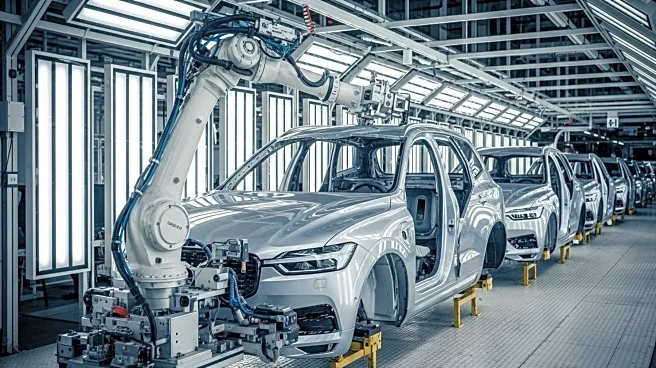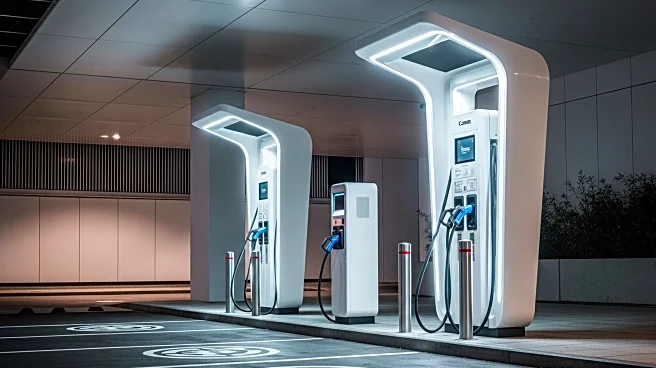What's Happening?
Nabors Industries has deployed the PACE-X Ultra™ X33 rig, the most powerful onshore drilling system in the U.S., for Caturus Energy. This deployment is part of Caturus' strategy to enhance natural gas production from its South Texas portfolio. The rig is designed to handle 4-mile laterals and vertical depths exceeding 14,000 feet, offering unmatched horsepower and performance. It features a one million-pound mast rating, advanced mud pumps, and integrates Cat® Dynamic Gas Blending to improve fuel efficiency and reduce emissions.
Why It's Important?
The deployment of the PACE-X Ultra™ X33 rig marks a significant advancement in onshore drilling technology, setting new standards for efficiency and sustainability in the industry. By enhancing drilling capabilities, Caturus Energy aims to increase its production capacity, contributing to the U.S. energy supply. The rig's ability to reduce emissions aligns with industry efforts to minimize environmental impact, supporting broader sustainability goals. This development also positions Nabors as a leader in ultra-spec rig technology, showcasing the potential for innovation in meeting modern drilling demands.
What's Next?
With the successful deployment of the PACE-X Ultra™ X33 rig, Caturus Energy is poised to expand its natural gas production, targeting growth to 1 Bcf/d by 2029. The rig's performance will be closely monitored to assess its impact on operational efficiency and environmental sustainability. This deployment may encourage other energy companies to adopt similar advanced technologies, driving further innovation in the sector. Additionally, the collaboration between Nabors and Caturus could lead to future partnerships focused on developing next-generation drilling solutions.
Beyond the Headlines
The introduction of the PACE-X Ultra™ X33 rig highlights the ongoing evolution of the energy industry towards more sustainable and efficient practices. As companies invest in cutting-edge technologies, there is potential for significant economic and environmental benefits. This shift also underscores the importance of collaboration between technology providers and energy producers in driving industry advancements. The focus on reducing emissions and improving fuel efficiency reflects a growing commitment to addressing climate change challenges within the energy sector.










